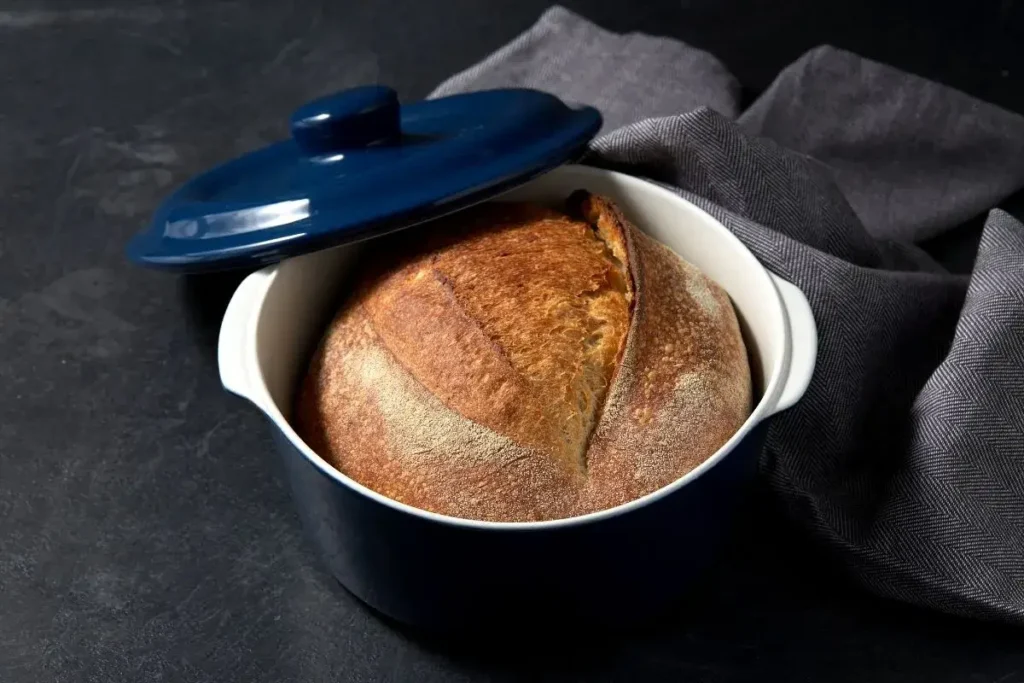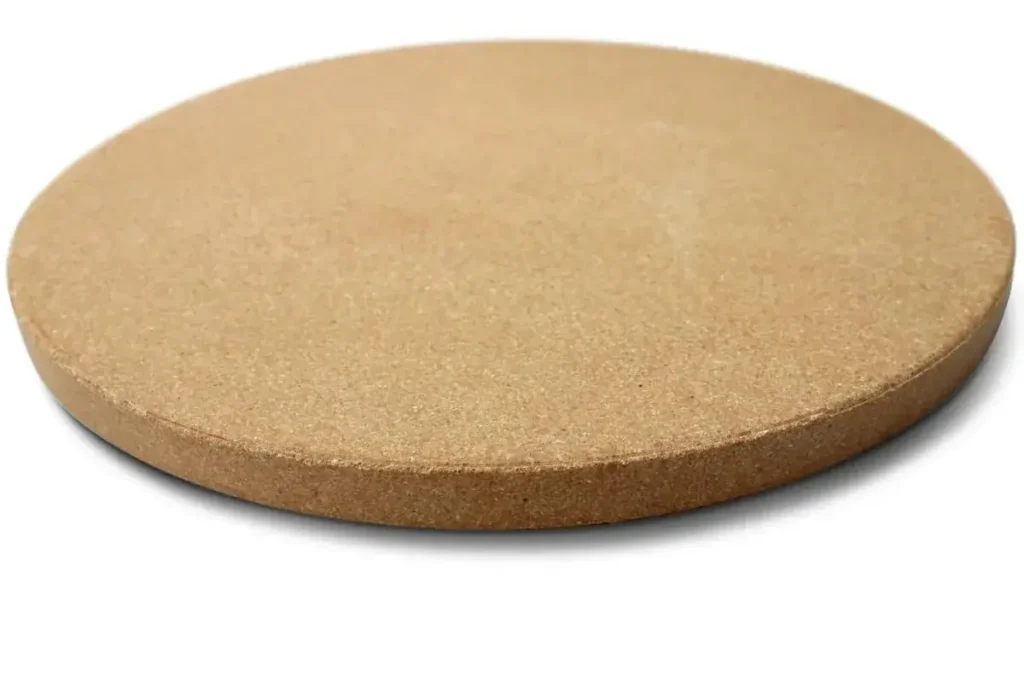
10 Best Alternatives to a Baking Stone & How to Use Them
A baking stone, also known as a pizza stone, is a versatile tool that home bakers often use to achieve that perfect crispy crust on pizzas, bread, and other baked goods. However, there are times when you might not have a baking stone at hand, or you may be looking for more affordable and readily available alternatives.
In this article, we will explore the ten best alternatives to a baking stone and provide you with guidance on how to use them effectively.
Table of Contents
ToggleThe Need for Alternatives
Before we dive into the alternatives, let’s briefly discuss why you might need them. Baking stones are excellent for providing even heat distribution and a crispy crust, but they aren’t always readily available or budget-friendly. In some cases, you may be in a location where it’s challenging to find a baking stone, or you might be looking for options that can serve a dual purpose. Regardless of the reason, these alternatives can help you achieve excellent baking results.
1. Pizza Steel

Pizza steel is the first alternative on our list. It has gained popularity among bakers due to its remarkable heat retention and distribution properties. Made from high-quality steel, pizza steel is designed to mimic the effects of a baking stone, resulting in a crispy crust for your pizzas and bread.
How to Use Pizza Steel:
- Place the pizza steel on a rack in your oven and preheat it to the desired temperature (usually around 500°F or 260°C) for at least 30 minutes.
- Once preheated, carefully slide your pizza or bread onto the hot steel using a peel or a parchment paper to prevent sticking.
- Bake as per your recipe’s instructions, and you’ll enjoy a perfect, crispy result.
2. Cast Iron Skillet

A cast iron skillet is a versatile kitchen tool that can serve as an excellent alternative to a baking stone. In addition to baking, you can use it for frying, sautéing, and roasting. Its ability to retain and distribute heat evenly makes it a suitable choice for achieving a crispy crust on your pizzas and bread.
How to Use a Cast Iron Skillet:
- Place the cast iron skillet in the oven and preheat it to the desired temperature (similar to pizza steel).
- Once preheated, transfer your pizza or bread into the skillet and bake following your recipe’s guidelines.
- The result will be a delicious creation with a fantastic crust.
3. Terracotta Tiles

Terracotta tiles are a budget-friendly alternative to a baking stone. You can find them at many home improvement stores, and they work well for creating a crispy crust on your pizzas and bread.
How to Use Terracotta Tiles:
- Place the terracotta tiles on a rack in your oven and preheat them to your desired baking temperature.
- Once they’re hot, slide your pizza or bread onto the tiles and bake as usual.
- You’ll be pleased with the results – a beautifully crisp crust.
4. Quarry Tiles

Similar to terracotta tiles, quarry tiles are an affordable and readily available option. They can withstand high temperatures and offer even heat distribution, making them a great alternative to a baking stone.
How to Use Quarry Tiles:
- Arrange the quarry tiles in your oven and preheat them to the required temperature.
- Carefully transfer your pizza or bread to the hot tiles.
- Bake your creation according to your recipe, and you’ll achieve a deliciously crispy crust.
5. Ceramic Baking Dish

A ceramic baking dish is a kitchen staple that can also be used as an alternative to a baking stone. Preheated in the oven, it provides the necessary heat retention and distribution for creating a crispy crust.
How to Use a Ceramic Baking Dish:
- Place the ceramic baking dish in your oven and preheat it to the baking temperature recommended by your recipe.
- Once the dish is hot, put your pizza or bread inside it and bake as instructed.
- You’ll be rewarded with a delectable result boasting a perfect crispy base.
6. Cordierite Pizza Stone

Cordierite pizza stones are specially designed for making pizza and are known for their ability to withstand high temperatures. They are an ideal choice for achieving a crispy pizza base.
How to Use Cordierite Pizza Stone:
- Position the cordierite pizza stone in the oven and preheat it to the desired temperature.
- When the stone is sufficiently hot, transfer your pizza onto it and bake according to your recipe.
- The outcome will be a mouthwatering pizza with a perfectly crispy base.
7. Baking Steel Griddle

A baking steel griddle is another versatile alternative. It offers a larger surface area, allowing you to bake multiple items at once. Its high thermal conductivity ensures a fantastic result for your pizza or bread.
How to Use a Baking Steel Griddle:
- Place the baking steel griddle in the oven and preheat it to the required temperature.
- Carefully move your pizza or bread onto the hot griddle.
- Follow your recipe for baking, and you’ll be delighted with the outcome.
8. Baking Sheet

A baking sheet is a common kitchen tool that can also serve as an alternative to a baking stone. Preheating it in the oven provides a solid, even surface for baking.
How to Use a Baking Sheet:
- Place the baking sheet in your oven and preheat it to the temperature recommended by your recipe.
- Once preheated, transfer your pizza or bread onto the sheet and bake as instructed.
- You’ll enjoy a delicious creation with a lovely crispy crust.
9. Glass Baking Dish

While not as popular as other alternatives, a glass baking dish can be used effectively for baking. It may not retain heat as well as some other options, but it can still provide good results.
How to Use a Glass Baking Dish:
- Position the glass baking dish in your oven and preheat it to the desired baking temperature.
- Once hot, carefully transfer your pizza or bread inside and bake following your recipe’s instructions.
- The outcome will be a tasty creation with a satisfying crust.
10. Firebricks

Firebricks are an excellent choice for baking in wood-fired ovens. They can withstand extremely high temperatures and are often used in professional pizzerias to achieve that perfect crust.
How to Use Firebricks:
- Place the firebricks in your wood-fired oven and preheat them to the required temperature.
- Once they’re hot, transfer your pizza or bread onto the bricks and bake according to your recipe.
- The result will be a professionally crisp and delicious crust.
How to Use These Alternatives
Using these alternatives is relatively simple, but it’s crucial to follow the right steps for the best results. Here’s a general guide:
- Preheat your chosen alternative in the oven to the desired baking temperature for at least 30 minutes.
- Carefully transfer your pizza or bread onto the preheated surface. You can use a peel, parchment paper, or any method that suits your preference.
- Follow your recipe’s instructions for baking time and temperature.
By following these steps, you’ll achieve a fantastic crispy crust on your baked goods, just as if you were using a baking stone.
Advantages and Disadvantages of these Baking Stone Alternatives
While the alternatives to a baking stone can be a lifesaver when you don’t have one at hand, it’s essential to understand their advantages and disadvantages to make an informed choice.
Advantages
- Affordability: One of the most significant advantages of these alternatives is their affordability. Baking stones can be quite expensive, whereas options like terracotta tiles, quarry tiles, and cast iron skillets are budget-friendly. You can achieve the same crispy results without breaking the bank.
- Versatility: Many of the alternatives serve a dual purpose. Cast iron skillets, for example, are not only excellent for baking but also for cooking various dishes. This versatility means you get more value from a single kitchen tool.
- Accessibility: While baking stones might not be readily available in all locations, you can find these alternatives in local home improvement stores, kitchen supply shops, or even in your own kitchen. They are accessible, making it convenient for bakers with varying levels of expertise.
- Durability: Options like pizza steel, cordierite pizza stones, and firebricks are incredibly durable. They can withstand high temperatures and are built to last. This means you won’t need to replace them frequently, making them a sound long-term investment.
- Multiple Alternatives: Having a range of alternatives to choose from allows you to tailor your baking experience to your specific needs. Whether you’re making pizza, bread, or other baked goods, you can select the best-suited alternative for each occasion.
Disadvantages
- Different Heat Retention: One key disadvantage of these alternatives is that they may have varying heat retention properties compared to a traditional baking stone. This means you’ll need to experiment and adjust cooking times and temperatures based on the specific alternative you choose.
- Learning Curve: Each alternative comes with its learning curve. Using a baking stone may seem straightforward, but mastering the nuances of using, for example, a pizza steel or a cast iron skillet requires practice and patience. Be prepared to invest time in perfecting your baking techniques.
- Maintenance: While some alternatives, like cast iron skillets and pizza steel, are relatively easy to maintain, others may require more attention. Terracotta and quarry tiles, for instance, need to be handled carefully to prevent cracking or damage.
- Not as Widely Recognized: Baking stones are a well-known and widely used tool in the baking community. When you use alternatives, you might encounter a lack of specific guidance or recipes tailored to those alternatives. You’ll need to adapt and rely on your own experimentation.
- Limited Availability: While many of the alternatives are accessible in various parts of the world, some, like cordierite pizza stones or firebricks, might be less readily available. This limited availability can be a drawback if you’re looking for a specific alternative.
10 Best Alternatives to a Baking Stone | Final Thoughts
In the world of baking, everyone wants that perfect crispy crust on their pizzas, bread, and other baked goodies. But sometimes, a baking stone isn’t in the cards due to cost or availability. In this complete guide, we’ve checked out the ten best ways to get that wonderfully crispy outcome without a baking stone.
Whether you go for a pizza steel, cast iron skillet, terracotta tiles, or something else, the key is to know what’s good and not-so-good about each option and follow the right steps to get the best results. These versatile alternatives not only save you money but also add a bit of creativity and adaptability to your baking adventures, so you can enjoy perfect crusts every time. Happy baking!
Lindsey Mackenzie
About me
Hi there! I’m Lindsey Mackenzie, the founder of Bake Smartly. Baking has been my passion since childhood, growing up in my father’s bakery. With Bake Smartly, I’m excited to share my love for all things sweet and savory. Join me on this delicious journey as we whip up scrumptious treats and sprinkle joy into every bite!






